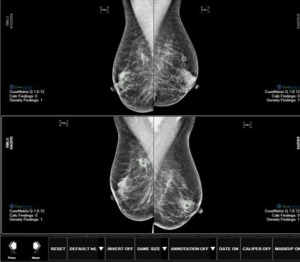by
John R. Fischer, Senior Reporter | February 22, 2023

A new study says that knowledge gaps among womens healthcare providers about dense breast tissue risks still exist but are improving.
When it comes to assessing breast density risk among patients, a new study shows providers making progress — but plenty of room for improvement.
Only 48% of providers know that the Tyrer-Cuzick breast cancer risk model is for identifying women who meet high-risk MR screening criteria. And only 49% know the Gail model should not be used for this purpose. Additionally, just 19% are aware that both mammography/tomosynthesis and MR are recommended for high-risk 30-year-olds.
While these and other knowledge gaps were found among 177 U.S. women's healthcare providers, online education can bridge gaps in dense breast risk knowledge, according to DenseBreast-info.org in its new study,
Effect of an Educational Intervention on Women’s Health Care Provider Knowledge Gaps About Breast Cancer Risk Model Use and High-risk Screening Recommendations.
“While there has been recent news coverage of knowledge gaps among women about breast density, risk and the effectiveness of mammography, it may be even more important to address critical gaps in knowledge among their healthcare providers,” Robin Seitzman, director of education and epidemiology research at DBI said in a statement.
The study was conducted in 2019 and classified knowledge gaps as fewer than 75% of respondents answering correctly. DBI provided both a pre-test and post-test following web-based education provided.
"These knowledge gaps persisted but improved," said the authors in the study.
It is the third study commissioned by DBI for identifying healthcare provider knowledge gaps, many of which can be reduced through web-based education, according to Seitzman. The first study, published in 2020, found several knowledge gaps among 200 radiologists and 1,300 radiological technologists. For example, 523 technologists erroneously believed the most commonly used risk model calculators
included breast density as a risk factor. The second found that just 29% knew breast cancer risk goes up with increasing amounts of glandular (dense) tissue, and that a little over 57% knew women with extremely dense breasts have a four-to-six fold increased risk, compared to least dense women.
The findings were published in the
Journal of Breast Imaging, along with those of the first study. The second study was published in
Menopause.
